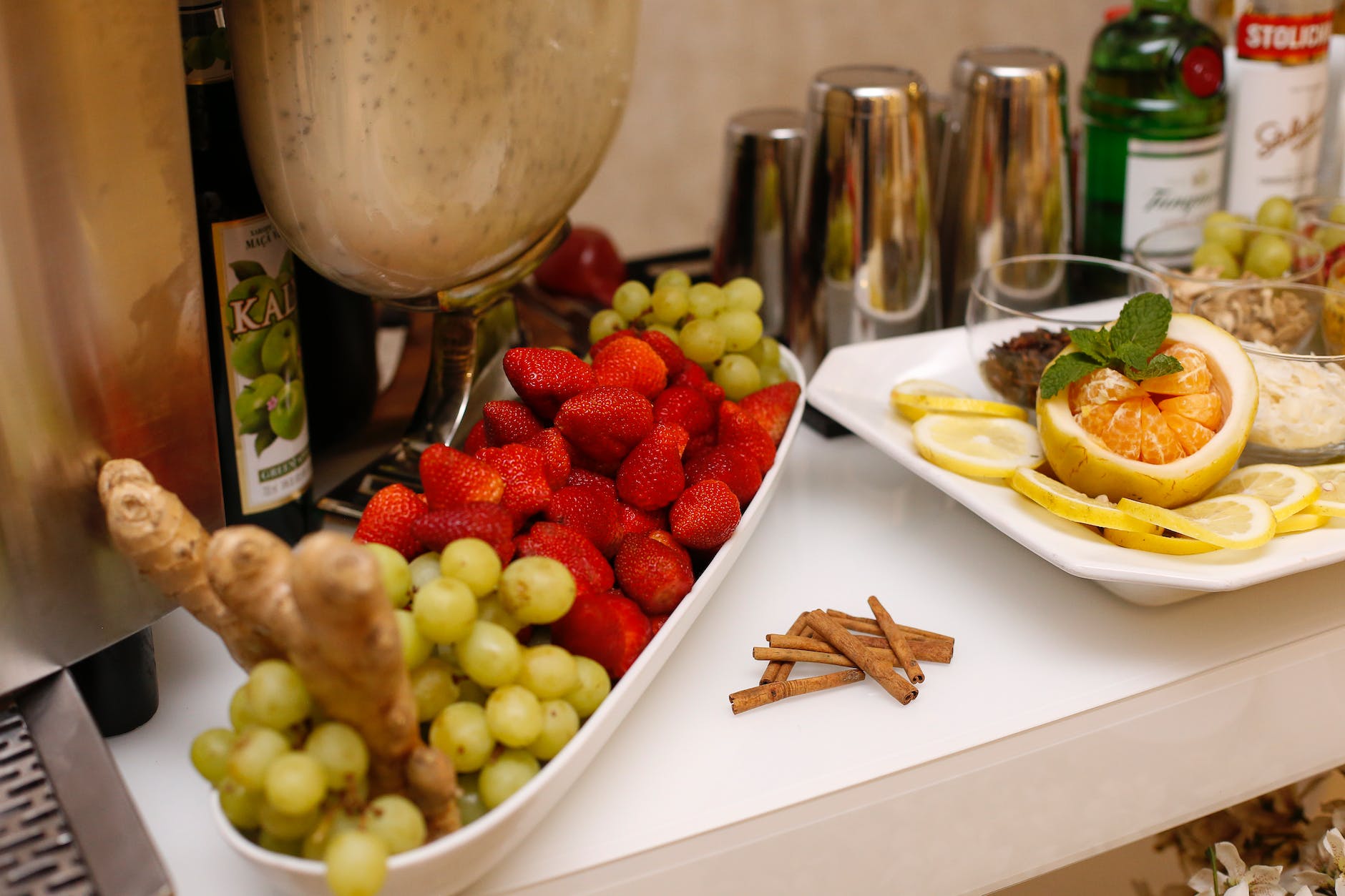
Managing diabetes involves careful monitoring of dietary choices, and while it's a common myth that fruit is off-limits, the truth is more nuanced. Understanding the best fruit choices for diabetes can help maintain healthy blood sugar levels.
Fruits, being naturally rich in nutrients and fiber, can be a part of a balanced diet, even for those with diabetes. The key is to select fruits that are lower in sugar and have a minimal impact on blood sugar levels. With savvy selection and portion control, fruits can provide health benefits without compromising diabetic management.
🔍 Seeking a breakthrough in Type 2 Diabetes management?
Discover our expert insights and innovative approaches on ‘How to Cure Diabetes’.
Click to transform your health journey today!
What you\'ll find in this article?
- What are the Best Fruit Choices for Diabetes?
- Can You Eat Fruit With Diabetes?
- 5 Best Fruits for Diabetics
- 5 Worst Fruits to Eat for Diabetics
- Tips for Fitting Fruit Into Your Diabetes Eating Plan
- Why Do I Need to Be Careful About Fruit Juices and Smoothies?
- Related Questions on Diabetic-Friendly Fruit Choices
What are the Best Fruit Choices for Diabetes?
When considering the best fruit choices for diabetes, one should focus on those with a low glycemic index (GI) and high fiber content. The American Diabetes Association (ADA) suggests that apples, berries, and citrus fruits are among the most beneficial choices due to their low GI and nutrient density.
Additionally, incorporating fruits with skin, like pears and peaches, can enhance fiber intake, which is beneficial for blood sugar control. It's also advisable to opt for whole fruits rather than fruit juices or dried fruits, which often contain more sugar and less fiber.
Being mindful of portion sizes is critical. A small piece of fruit or a half-cup of fresh fruit is typically an appropriate serving size. Monitoring how the body reacts to different fruits can help in making more informed choices over time.
Explore our specialized services in diabetes care 🌟.
From personalized diet plans to effective exercise routines, we have what you need to take control of Type 2 Diabetes.
Visit our services page now!











Can You Eat Fruit With Diabetes?
Yes, people with diabetes can enjoy fruit as part of their diet. The key is to eat them in moderation and to be aware of their carbohydrate content. Fruit contains natural sugars, which contribute to overall carb intake.
By choosing fruits that are lower in sugar and eating them alongside a source of protein or fat, one can minimize spikes in blood sugar levels. For example, pairing an apple with a handful of almonds can create a satisfying snack that's less likely to cause a sharp rise in blood glucose.
Fruits are not only permissible for those managing diabetes, but they can also provide essential vitamins, minerals, and fibers that contribute to overall health. The ADA encourages including fruits in meal planning, using tools like the Diabetes Plate Method for balanced nutrition.
5 Best Fruits for Diabetics
- Apples: High in fiber and low in calories, ideal for a diabetes-friendly diet.
- Berries: Strawberries, blueberries, and others are packed with antioxidants, vitamins, and fiber.
- Cherries: With a low GI, cherries can be a sweet yet safe choice.
- Pears: Nutrient-rich and high in fiber, pears are excellent for digestive health.
- Kiwi: This nutrient powerhouse provides vitamin C, fiber, and is lower in sugar.
5 Worst Fruits to Eat for Diabetics
Fruits that are high in sugar or have a high glycemic index should be consumed sparingly. Dried fruits and fruit juices, in particular, are more concentrated in sugar and can cause blood sugar levels to spike.
Tropical fruits like pineapples and mangoes also tend to be higher in sugar and should be enjoyed in smaller quantities. Similarly, bananas, which are higher in carbs, should be eaten in moderation, especially ripe ones.
It's not just about which fruits to avoid; it's also about how they are prepared. Fruits canned in syrup or with added sugars negate many of the health benefits of the fruit itself.
Tips for Fitting Fruit Into Your Diabetes Eating Plan
Integrating fruit into a diabetic diet can be done safely by following some simple guidelines. Always measure fruit to ensure proper portion sizes and opt for fresh, whole fruits whenever possible.
Pairing fruit with a protein or healthy fat can help to slow down the absorption of sugar. For instance, enjoy an apple with a tablespoon of peanut butter for added satiety and a more stable blood sugar response.
Using the Diabetes Plate Method can offer a visual guide to ensure that fruits are balanced with vegetables, proteins, and other nutrients in your meal. Remember to account for the carbs in fruits as part of your total carbohydrate intake for the meal or snack.
Why Do I Need to Be Careful About Fruit Juices and Smoothies?
Fruit juices and smoothies can be deceptive; they often contain more sugar and calories than you might expect. Since the fiber is often removed during juicing, the sugar content becomes more concentrated, which can lead to rapid increases in blood sugar levels.
Smoothies may seem healthy, but they can also contain high amounts of sugar, especially if they include sweetened yogurt, honey, or other fruits high in sugar. If you do opt for a smoothie, make sure it's made with a majority of low-GI fruits and includes healthy fats or proteins to balance it out.
Always check the labels on store-bought juices and smoothies, and opt for those with no added sugars. Better yet, make your own at home where you can control the ingredients and portions.
What Is the Best Fruit for Diabetics to Eat?
The best fruits for diabetics are those that have a low glycemic index and are high in fiber. Berries, apples, and citrus fruits are excellent choices that can satisfy a sweet tooth without causing a significant spike in blood sugar.
It is essential to monitor individual responses to different fruits, as glycemic responses can vary from person to person. A registered dietitian or a healthcare provider can provide personalized advice.
Which Fruit Can a Diabetic Patient Eat Freely?
While no fruit can be eaten without limits, certain fruits like berries, cherries, and apples can be eaten more liberally than others. They are lower in carbohydrates and sugars, making them safer options in controlled portions.
Remember, the concept of "free" eating does not apply to diabetes where carb counting and blood sugar management are crucial.
What Fruit Does Not Spike Blood Sugar?
Fruits that typically have minimal impact on blood sugar include those with high fiber content and low glycemic index. Berries, apples, and pears are good examples.
Choosing whole fruits over processed or juiced ones is always advisable as they have more fiber which helps to slow down the digestion and absorption of sugar.
What Are the 10 Best Foods for a Diabetic?
Beyond fruits, other beneficial foods for diabetics include leafy greens, nuts, seeds, whole grains, fatty fish, lean meats, beans, and low-fat dairy. These foods help maintain balanced blood sugar levels and support overall health.
Eating a variety of these foods can help ensure that you're getting the necessary nutrients while managing your diabetes.
Now, let's take a moment to watch a helpful video from the American Diabetes Association discussing fruit consumption for people with diabetes.
Remember, fruit is not off-limits when you have diabetes. With the right choices and portions, fruit can be a nutritious part of your diet. For more guidance, always consult with healthcare professionals to create a plan tailored to your needs.



